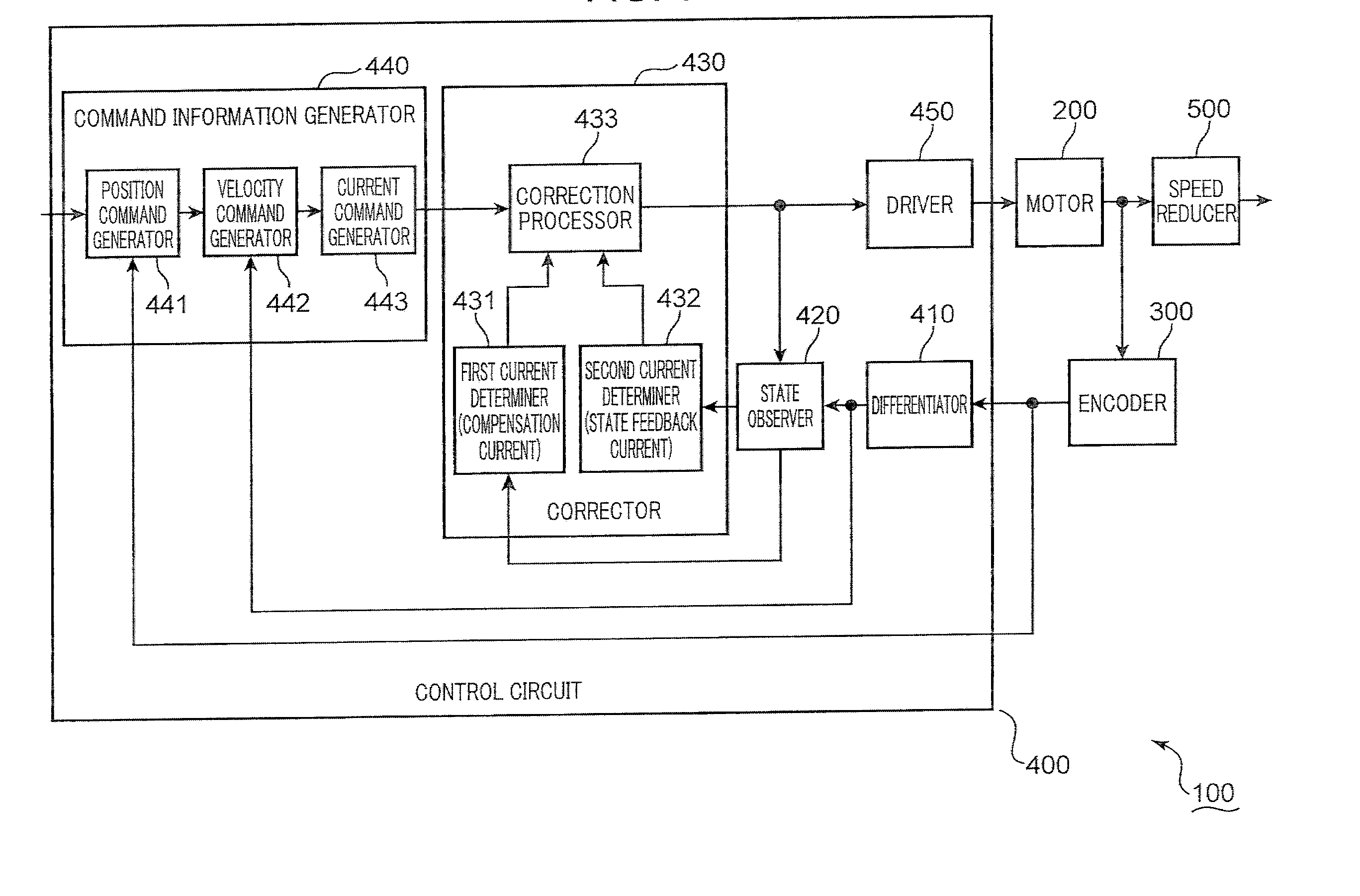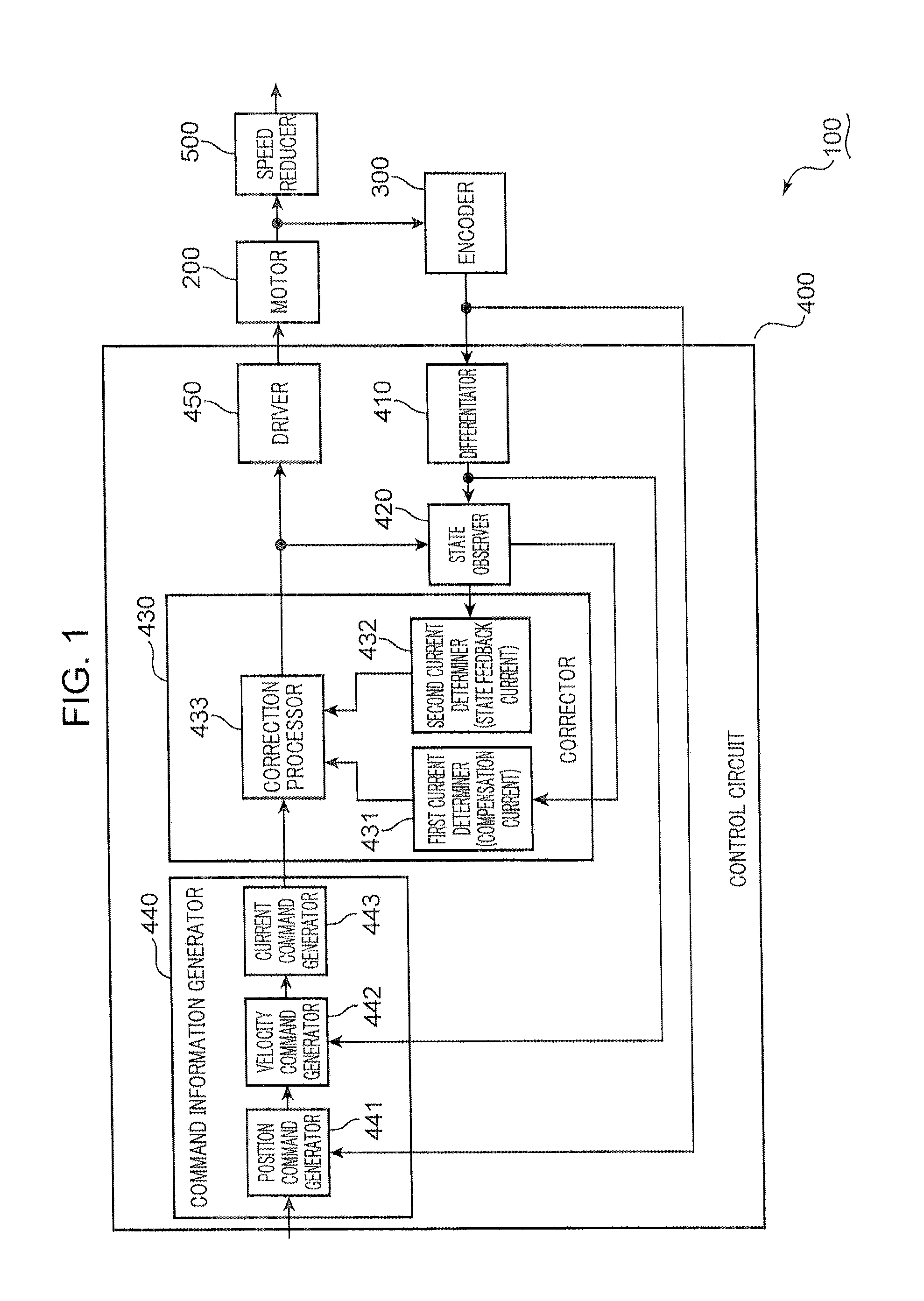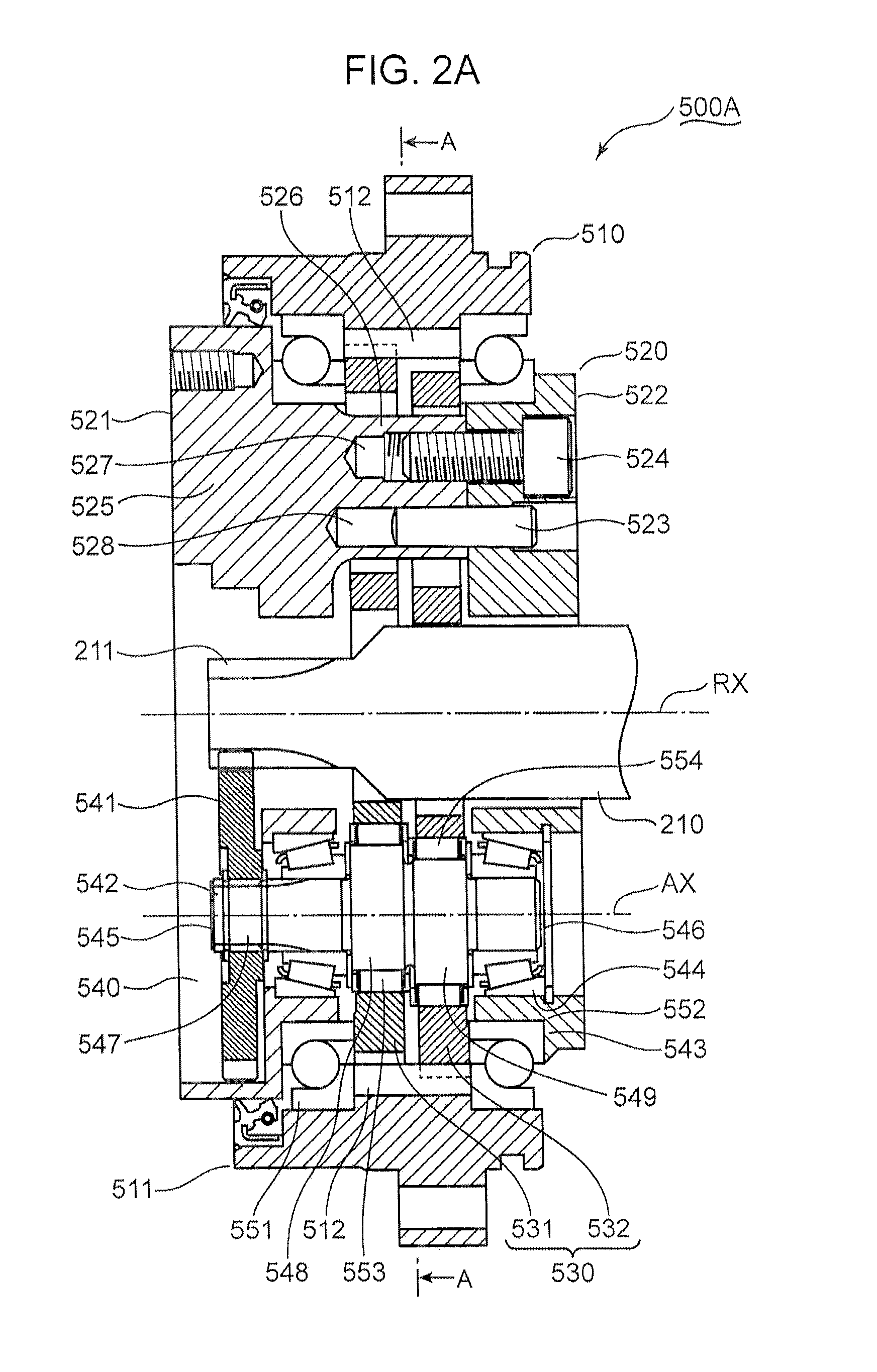Control device and speed reducer system
a control device and speed reducer technology, applied in the direction of program control, electric programme control, instruments, etc., can solve the problems of high manufacturing cost of a control device incorporating the techniques, unsuitable arrangement of encoders on the output side of speed reducers, and difficulty in adapting to the use of different speed reducers, so as to improve follow-up accuracy
- Summary
- Abstract
- Description
- Claims
- Application Information
AI Technical Summary
Benefits of technology
Problems solved by technology
Method used
Image
Examples
first embodiment
[0044]
[0045]Generally, a speed reducer has transmission characteristics such as elasticity, backlash and angular transmission error. These transmission characteristics worsen operational accuracy of a device incorporating the speed reducer. Wave gear devices and oscillatory cyclo-speed reducers are often used in technical fields such as industrial robots. The wave gear devices and the oscillatory cyclo-speed reducers may transmit power more accurately than general speed reducers.
[0046]An oscillatory cyclo-speed reducer may transmit power at a high speed reduction ratio and has very small backlash. The oscillatory cyclo-speed reducer is small in size and has high rigidity. In view of these characteristics, the oscillatory cyclo-speed reducer is often used for a part of large-size robots and industrial robots for which high rigidity is required.
[0047]An oscillatory cyclo-speed reducer includes annularly arranged internal teeth and an oscillatory gear portion meshed with the internal t...
second embodiment
[0179]The observer described in the context of the first embodiment outputs an axial torsional vibration. Alternatively, the observer may output a vibration component caused by holes which are formed in a gear portion. A speed reducer system including an observer configured to output a vibration component caused by holes which are formed in a gear portion is described in the second embodiment,
[0180]FIG. 9 is a control block diagram of the speed reducer system 100 (c.f. FIG. 1). Signs and symbols commonly used between the first and second embodiments mean that elements denoted by the common signs and symbols have the same functions as the first embodiment. Therefore, the description of the first embodiment is applicable to these elements. The speed reducer system 100 is described with reference to FIGS. 1, 5 and 9.
[0181]Like the first embodiment, the control block diagram shown in FIG. 9 is divided into an actuator section and a control section. The actuator section shows the motor 2...
third embodiment
[0205]The observers described in the context of the first and second embodiments may estimate an angular error in light of a disturbance torque which rapidly changes like a step function. However, a system incorporating a speed reducer may receive a periodically changing disturbance load. A speed reducer system configured to reduce an angular transmission error even under an environment in which there is a periodically changing disturbance load is described in the third embodiment.
[0206]FIG. 11 is a schematic block diagram showing an exemplificative functional configuration of a speed reducer system 100B. Signs and symbols commonly used in the first and third embodiments mean that elements denoted by the common signs and symbols have the same functions as the first embodiment. Therefore, the description of the first embodiment is applicable to these elements. The speed reducer system 100B is described with reference to FIG. 11.
[0207]Like the first embodiment, the speed reducer syste...
PUM
 Login to View More
Login to View More Abstract
Description
Claims
Application Information
 Login to View More
Login to View More - R&D
- Intellectual Property
- Life Sciences
- Materials
- Tech Scout
- Unparalleled Data Quality
- Higher Quality Content
- 60% Fewer Hallucinations
Browse by: Latest US Patents, China's latest patents, Technical Efficacy Thesaurus, Application Domain, Technology Topic, Popular Technical Reports.
© 2025 PatSnap. All rights reserved.Legal|Privacy policy|Modern Slavery Act Transparency Statement|Sitemap|About US| Contact US: help@patsnap.com



